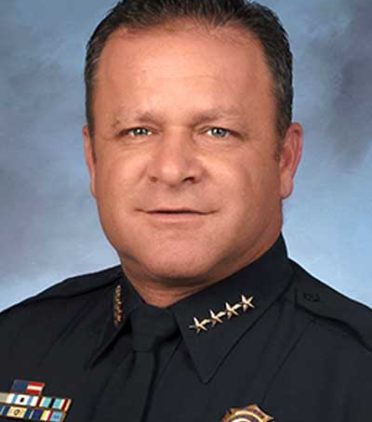California SB 643: School Safety Tip Line Requirements and How SaferWatch Can Help
New Requirements for School Safety in California
In an effort to improve school safety and prevent tragedies, California’s legislature has introduced Senate Bill 643 (SB 643) – also known as the Saugus Strong Act. This bill is named in honor of the Saugus High School community and seeks to establish a statewide “Safe-To-Tell” anonymous tip program. SB 643 would require all K-12 schools to implement an anonymous tip line for reporting potential threats or dangers on campus. The goal is to ensure that students, parents, and community members have a safe, confidential way to report warning signs – whether it’s bullying, threats of violence, or mental health concerns – before they escalate into incidents. This push comes as experts note troubling trends: emergency room visits for teen suicide attempts jumped 30% in 2020, and studies found 80% of school shooters had told someone of their violent plans beforehand. In short, SB 643 aims to save lives by fostering early intervention through accessible, around-the-clock tip lines.
Overview of SB 643 Tip Line Requirements
SB 643 lays out clear requirements for California schools and the state education department to create an effective anonymous reporting system for school safety. Some key provisions include:
- Anonymous Reporting System: Schools must have a system allowing any person to anonymously report dangerous, violent, or unlawful activities on school property or events. Reports can be made confidentially by students or community members without fear of identification.
- Multiple Reporting Channels: The program is required to operate a 24/7 crisis call center, along with an internet website, a mobile application, and an email address for submitting tips. In practice, each school’s tip line could be a phone hotline, website form, email, text, or mobile app – or a combination – as long as it’s easily accessible and anonymous.
- 24/7 Monitoring and Trained Staff: The tip line must be monitored 24 hours a day, 7 days a week by trained professionals to ensure that urgent tips get an immediate response. Students can report issues at any time – day or night – and know that someone will promptly see and act on the information.
- Prompt Coordination with Authorities: Under SB 643, any tips received must be promptly forwarded to the appropriate public safety agencies and school officials for action. This means if a tip involves a credible threat, law enforcement and the school’s safety team will be alerted right away so they can intervene.
- School-Based Response Teams: Each school (or local educational agency) would form a team of at least three administrators to receive these tip notifications. These teams coordinate with police and follow up on the tips. Schools also must prominently post information about the tip line on their websites to make sure everyone knows how to use it.
By mandating these measures, California is joining the roughly 26 other states that already use anonymous school safety hotlines or apps. The expectation is that a well-publicized, easy-to-use tip line will encourage students and others to “see something, say something” – especially since research shows early reports can thwart violence. As Senator Scott Wilk (the bill’s author) noted, “perhaps if students had a safe way to report their concerns, violence and death could have been avoided”. SB 643 envisions a statewide, standardized tip reporting system to ensure no cry for help or warning sign falls through the cracks.
Why Anonymous Tip Lines Matter for School Safety
Anonymous tip lines have become a best practice in school safety for good reason. They address the very real fear and hesitation that students or staff might have about reporting threats or sensitive information. By guaranteeing confidentiality, these systems create a “safe space” that encourages reporting. Students are more likely to speak up about a classmate’s troubling behavior or a rumor of violence if they know they can do so discreetly. An effective tip line can capture critical information about bullying, planned attacks, weapons, or even a peer’s suicidal statements – information that might otherwise never reach authorities in time.
Tip lines aren’t just about preventing violent attacks; they can also be a tool for addressing mental health crises. California’s SB 643 was partly motivated by rising concerns about student mental health – such as the increase in self-harm and suicide attempts among teens. An anonymous reporting system can allow a student to report that their friend is talking about suicide or to seek help for themselves. In this way, tip lines can trigger early interventions by counselors or social workers in addition to law enforcement, truly covering the spectrum of school safety threats.
SaferWatch’s Tip Line Capabilities and Solutions
SaferWatch is a safety platform that was built with exactly these kinds of scenarios in mind. In fact, SaferWatch already includes an anonymous tip reporting system that aligns closely with SB 643’s requirements. Through the SaferWatch mobile app, students, teachers, parents, or community members can easily submit tips about suspicious activity, threats, bullying, or any safety concern – with the option to stay completely anonymous. The app’s interface lets users select the type of incident (e.g. bullying, assault, weapon sighting) and provide a description, and they can even attach photos, videos, or audio evidence to give more context.
SaferWatch can also provide schools with their own dedicated phone number for anonymous tips, capable of handling both voice calls and text messages. This service is designed to seamlessly integrate with the existing SaferWatch platform and fulfill SB 643’s call/text tip line requirements in a simple, turnkey manner.
Importantly, SaferWatch is designed to notify the right people immediately when a tip comes in. Alerts can be sent simultaneously to school administrators, security personnel, and local law enforcement, ensuring a coordinated and swift response. For example, if a student uses SaferWatch to report a classmate who posted a shooting threat on social media, the school’s safety team and police can get an instant alert with that information and act fast. This mirrors SB 643’s requirement that tips be promptly forwarded to public safety and school-based teams.
For school administrators working to comply with SB 643, implementing SaferWatch can fulfill the tip line requirement and more. By deploying SaferWatch district-wide, a school system would be providing a phone-based and app-based tip solution- covering multiple channels as the law suggests. The app can be promoted on the school’s website and to all students and parents, satisfying the mandate to prominently post tip line information. And because SaferWatch allows anonymity and is available 24/7, it checks the critical boxes of the legislation.
Beyond Tip Lines: Other School Safety Features of SaferWatch
While tip reporting is a cornerstone, SaferWatch offers a comprehensive suite of safety tools that can further enhance a school’s emergency preparedness. By choosing a platform like SaferWatch, schools get an integrated solution that goes well beyond just a tip line. Here are some additional ways SaferWatch can help schools improve safety:
- Panic Alert System (Mobile & Physical Panic Buttons): SaferWatch includes an instant panic button feature that staff can use to notify law enforcement of an emergency at the touch of a button. For example, during an active shooter or other crisis, a teacher can activate a mobile panic alert to immediately summon help. The alert goes directly to 911 dispatchers and first responders, transmitting the school’s location and emergency details without the need for a phone call. This kind of integration with 911 can save precious minutes by bypassing the usual 911 questions and even preventing misrouted calls. Several states (like New Jersey, Florida, New York) now require panic alarm systems in schools – and SaferWatch is capable of meeting those requirements with its Alyssa’s Law-compliant solution.
- Mass Notification and Real-Time Updates: Communication is vital during any school emergency. SaferWatch provides a mass notification system that school officials can use to send out real-time alerts and updates to the school community. Whether it’s a lockdown notice, evacuation instruction, or all-clear message, administrators can blast out messages via multiple channels to reach students, staff, and parents immediately. SaferWatch’s notification tool can also be used for non-critical updates – for instance, to announce safety drills, weather closures, or reunification plans – all from one easy interface.
- Incident Management & Drill Support: The SaferWatch platform helps schools manage and document incidents from start to finish. When a tip or panic alert comes in, authorized personnel can track the incident’s progress, share information with responding agencies, and log actions taken – creating a clear timeline for after-action review. Additionally, SaferWatch can be used during safety drills (like active shooter drills or lockdown exercises) to practice the emergency communication flow. By using the app in drills, staff and law enforcement become familiar with the system, so in a real crisis the response is more seamless.
- Threat Assessment and Prevention: A robust tip line is a key part of preventing violence, but it works best in tandem with a threat assessment process. SaferWatch can aid school threat assessment teams by centralizing the reports of concerning behavior. When tips about bullying, threats, or mental health come in, the platform can route them to not only security/police but also to counselors or administrators responsible for threat assessment. This ensures that students of concern are evaluated and given help or intervention as needed.
Readiness for Safer Schools
California’s SB 643 is shining a spotlight on the importance of anonymous tip lines in keeping schools safe. By requiring every school to have a call/text tip line that’s monitored around the clock, the legislation aims to ensure that no warning sign goes unreported and that help can reach at-risk individuals before it’s too late. Meeting these requirements might seem daunting at first, but solutions like SaferWatch make it entirely achievable – and in fact, can take school safety to the next level.
In an era of heightened awareness about school threats and student mental health, having a robust safety communications infrastructure is critical. SB 643 underscores that protecting schools is not just about locks and drills, but also about information-sharing and vigilance. An anonymous tip from a student or parent can genuinely be the difference-maker in preventing a tragedy or getting a student help. With SaferWatch in place, schools can confidently tell their community: “If you see something, you can securely say something – and we will see it and respond immediately.” By fostering this culture of reporting and equipping it with modern technology, California’s schools can become safer watchtowers for the future.
To learn more about SaferWatch’s dedicated tip line and safety platform, connect with a SaferWatch specialist today.























